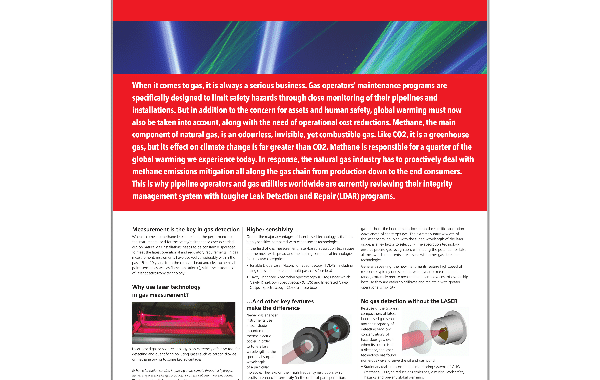published in February of 2019
When it comes to gas, it is always a serious business. Gas operators’ maintenance programs are specifically designed to limit safety hazards through close monitoring of their pipelines and installations. But in addition to the concern for assets and human safety, global warming must now also be taken into account, along with the need of operational cost reductions. Methane, the main component of natural gas, is an odorless, invisible, yet combustible gas. Like CO2, it is a greenhouse gas, but its effect on climate change is far greater than CO2. Methane is responsible for a quarter of the global warming we experience today. In response, the natural gas industry has to proactively deal with methane emissions mitigation all along the gas chain from production down to the end consumers. This is why pipeline operators and gas utilities worldwide are currently reviewing their integrity management system with tougher Leak Detection and Repair (LDAR) programs.
Measurement Is The Key In Gas Detection
When it comes to methane leak detection, the performance of the instruments used for the safety/maintenance checks carried out on natural gas installations needs to be constantly upgraded to meet the latest operational and regulatory requirements. In gas measurement, instruments have evolved considerably within the past 15 to 20 years, from the catalytic bead and electrochemical point sensors as well as flame ionization (i), with the introduction of laser spectroscopy technology.
